Heavy Duty Back Support Belt for Lifting & Work - Elastic Back
The Imperative of Robust Lumbar Support in Industrial & Occupational Settings
In demanding occupational environments, where physical strain is a constant, the integrity of an individual's musculoskeletal system is paramount for productivity and safety. The increasing awareness of occupational health and safety, coupled with ergonomic advancements, has led to a significant surge in demand for sophisticated support solutions. Among these, the heavy duty back support stands out as a critical tool for preventing injuries and enhancing worker performance. Industry trends indicate a sustained growth in the personal protective equipment (PPE) market, with a specific focus on ergonomic aids that mitigate risks associated with lifting, prolonged standing, and repetitive motions. Businesses are increasingly investing in such solutions to reduce lost workdays, lower healthcare costs, and improve overall operational efficiency.
This specialized equipment is engineered to provide superior lumbar and abdominal compression, supporting the spine during strenuous activities. The design principles often revolve around enhancing intra-abdominal pressure, which acts as a natural "hydrostatic" support for the lumbar spine, thereby reducing stress on the vertebral discs and ligaments. Such proactive measures are indispensable across various sectors, from logistics and manufacturing to construction and healthcare, where manual material handling and postural demands are prevalent.
Technical Specifications and Design Excellence for Lumbar Braces
A high-performance heavy duty back support is characterized by a precise combination of material science, ergonomic engineering, and robust construction. Key components typically include multi-layered elastic fabrics, strategically placed rigid or semi-rigid stays, and advanced closure systems. For instance, the Rinforced Waist Support Belt is often constructed from high-quality neoprene or breathable elastic blends, offering both flexibility and firm compression. The materials are selected for their durability, moisture-wicking properties, and ability to withstand rigorous use in challenging environments.
Rigid stays, often made from polypropylene or carbon fiber, are anatomically contoured to support the natural curvature of the spine, preventing excessive lumbar flexion or extension. These stays are crucial for maintaining spinal alignment during lifting and heavy-duty tasks. The closure mechanisms, typically involving hook-and-loop fasteners or double-pull elastic straps, allow for customizable compression levels, ensuring a secure and comfortable fit for various body types. The integration of a secondary belt with elastic back or an elastic back belt further enhances adjustability and targeted support.
| Parameter | Specification Range | Technical Rationale |
|---|---|---|
| Material Composition | Neoprene, Nylon, Polyester, Spandex Blends (80-90% elastic content) | Ensures breathability, flexibility, and robust compression. Neoprene offers insulation and elasticity. |
| Stay Material/Quantity | Polypropylene/Spring Steel/Carbon Fiber; 4-8 contoured stays | Provides semi-rigid support, prevents rolling, and maintains proper lumbar curve. |
| Width (Lumbar Section) | 8-10 inches (20-25 cm) | Optimizes coverage for the entire lumbar region, ensuring effective support. |
| Closure System | Double-pull elastic straps with hook-and-loop fasteners | Allows for precise, adjustable compression and secure fit without slippage. |
| Breathability Index | High (Perforated/Mesh Fabrics) | Reduces heat build-up and moisture, enhancing user comfort during extended wear. |
| Durability/Lifespan | 1-3 years under typical industrial use | Reflects material resilience and construction quality against wear and tear. |
Precision Manufacturing & Quality Assurance in Back Support Production
The manufacturing of a high-quality heavy duty back support like the Rinforced Waist Support Belt is a multi-stage process that prioritizes precision, material integrity, and ergonomic functionality. It begins with the careful selection of raw materials – premium-grade elastic webbing, durable nylon fabrics, and medical-grade polypropylene or spring steel for stays. Each material undergoes rigorous incoming quality control (IQC) to ensure compliance with specified tensile strength, elasticity, and dermatological safety standards.
Manufacturing Process Steps:
- Material Preparation & Cutting: Large rolls of fabric and elastic are precisely cut using automated CNC fabric cutting machines or laser cutters. This ensures accuracy and minimizes material waste. Stays are cut and shaped according to ergonomic designs.
- Stitching & Assembly: Skilled technicians utilize industrial-grade sewing machines for reinforced stitching, often employing double-stitching techniques on high-stress areas like seams and strap attachments. This guarantees structural integrity under heavy loads. All components, including the main body, elastic pull straps, and hook-and-loop fasteners, are meticulously assembled.
- Integration of Support Stays: The rigid or semi-rigid stays are carefully inserted into dedicated pockets, ensuring they are correctly aligned to provide optimal lumbar support without causing discomfort or pressure points.
- Finishing & Trimming: Excess threads are trimmed, and edges are finished to prevent fraying and ensure a smooth, comfortable surface against the skin.
- Quality Control & Testing: Each unit undergoes stringent quality checks, including visual inspection for defects, functional testing of closure systems, and dimensional verification. Batch testing may include durability assessments such as repetitive stress tests and material fatigue analysis to simulate real-world usage. Products conform to international standards such as ISO 13485 for Medical Devices Quality Management Systems and often bear CE Mark certification, affirming their safety and performance within the European Economic Area.
- Packaging & Sterilization (if applicable): Products are individually packed, often with user manuals and care instructions, ready for distribution.
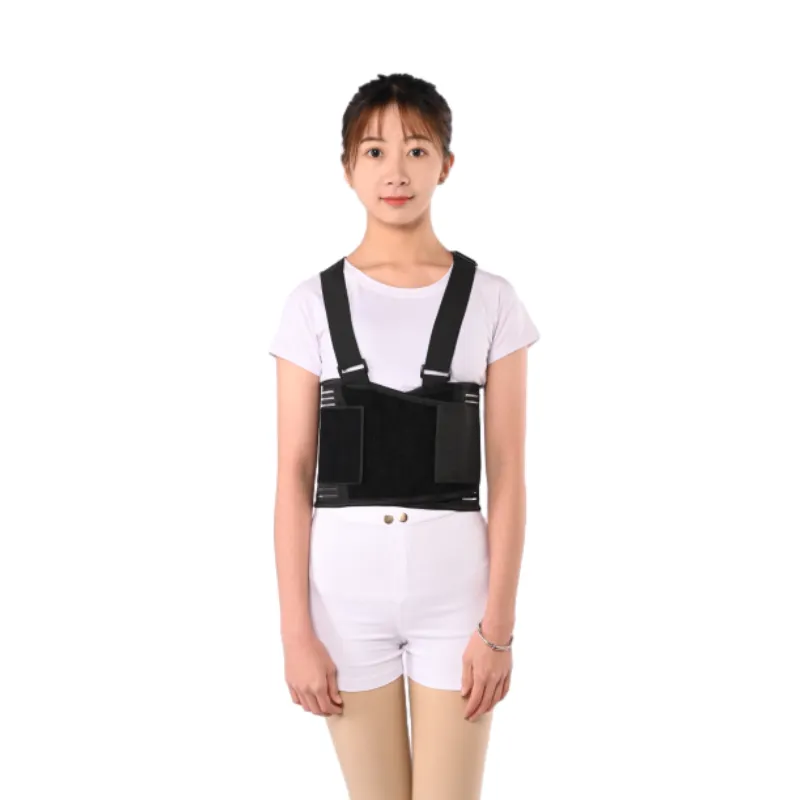
Diverse Application Scenarios and Ergonomic Advantages
The versatility of a well-engineered heavy duty back support makes it indispensable across a spectrum of industries. In logistics and warehousing, where workers frequently engage in lifting, carrying, and stacking, these belts significantly reduce the risk of lumbar sprains and strains. For construction workers handling heavy materials or operating vibrating machinery, the stabilization offered by a back brace lifting device minimizes fatigue and enhances posture. In manufacturing facilities, particularly those with assembly lines requiring prolonged standing or repetitive bending, the continuous support improves comfort and sustains productivity throughout shifts.
Beyond traditional industrial settings, professional healthcare providers, such as nurses and orderlies, benefit immensely when engaging in patient handling and transfers, where the back brace support for lifting can prevent debilitating back injuries. The primary advantages include enhanced spinal stability, promoting correct lifting techniques, and distributing stress more evenly across the core musculature. This proactive approach to ergonomics not only safeguards employee health but also translates into tangible operational benefits, such as reduced workers' compensation claims, decreased absenteeism, and improved overall workforce morale. The design elements that ensure high levels of breathability and comfort are crucial for prolonged wear, especially in warm climates or physically demanding roles.
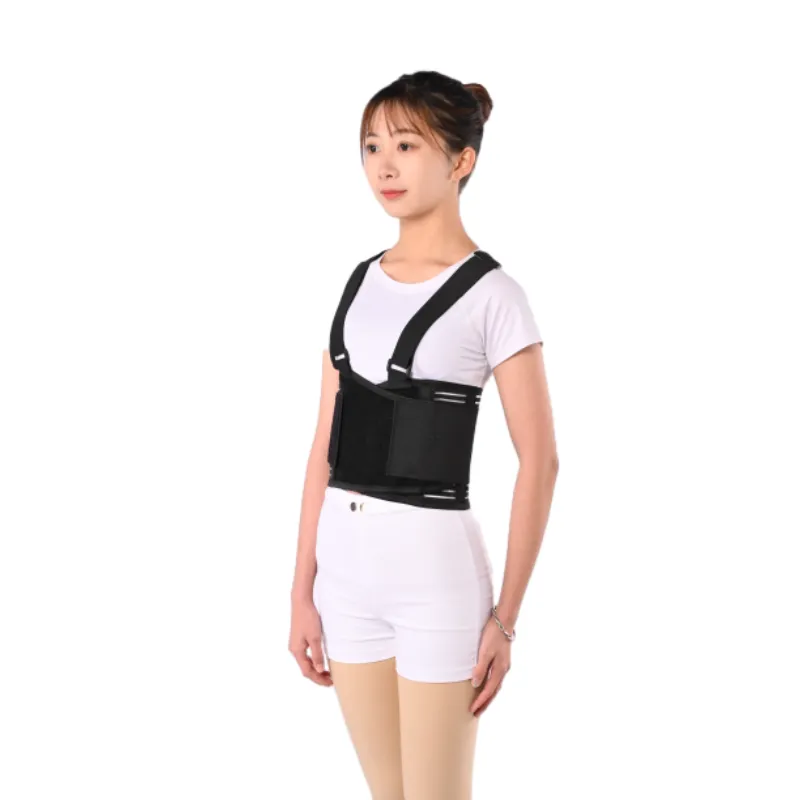
Comparative Analysis and Customization Potential
When evaluating a heavy duty back support, discerning buyers often compare products based on several critical factors: material durability, level of adjustable compression, design for breathability, and the quality of spinal stays. While many general-purpose back supports are available, industrial applications demand a higher standard of ruggedness and specialized features. For instance, the Rinforced Waist Support Belt is designed with industrial use in mind, featuring reinforced stitching and high-tensile elastic that outperforms consumer-grade alternatives.
Beyond off-the-shelf solutions, leading manufacturers like J&H Orthopedic also offer extensive customization capabilities. This includes bespoke sizing for large workforces, integration of company logos for branding, or even modifications to material composition for specific environmental challenges (e.g., moisture-resistant materials for outdoor work, flame-retardant options for high-heat environments). Custom solutions ensure optimal ergonomic fit and functional performance, which is paramount for achieving maximum worker compliance and injury prevention. Collaborative design processes with clients enable the development of solutions perfectly tailored to unique operational demands, ensuring that the back support becomes an integral and effective component of the safety protocol.
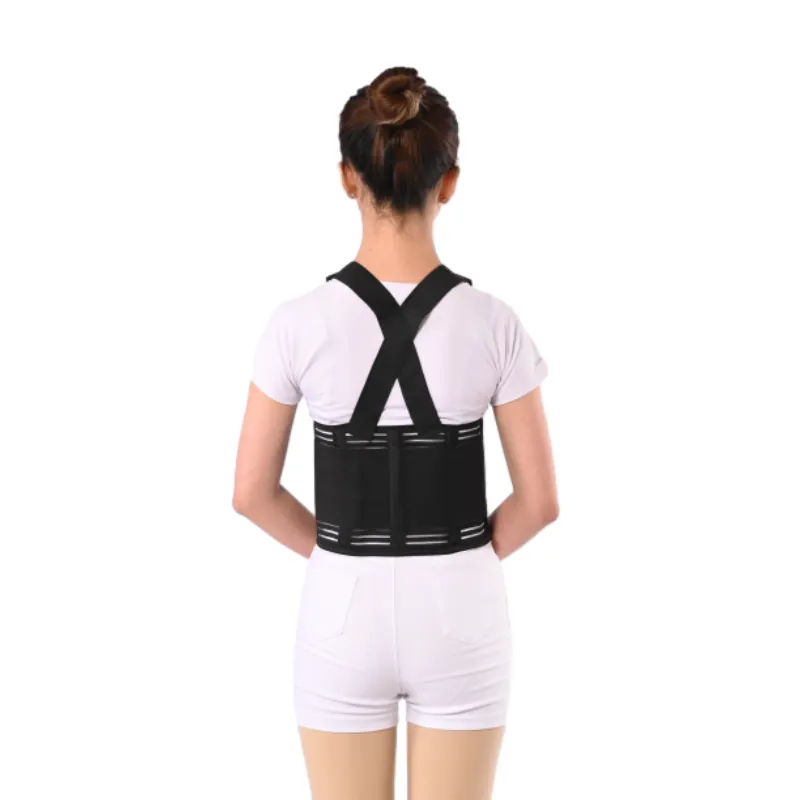
Real-World Impact: Case Studies and Client Testimonials
The tangible benefits of implementing a robust heavy duty back support program are best illustrated through real-world examples. A large logistics firm, facing escalating rates of lower back injuries among its warehouse staff, integrated the Rinforced Waist Support Belt into its PPE mandate. Within six months, the firm reported a 35% reduction in back-related injury claims and a significant decrease in lost workdays. Employee feedback highlighted improved comfort and a greater sense of security during heavy lifting tasks, reinforcing the effectiveness of the support.
Similarly, a major construction company adopted our custom-designed back brace lifting solutions for their steel erectors and concrete workers. These tailored belts, designed to withstand harsh outdoor conditions and provide maximum support during strenuous activities, led to a measurable increase in worker efficiency and a 20% improvement in compliance with company safety protocols. "The durability and ergonomic fit of these belts have made a noticeable difference in our team's performance and safety," remarked the Safety Manager, underscoring the long-term value provided by high-quality back support systems. These case studies underscore the pivotal role specialized back supports play in creating a safer, more productive work environment.
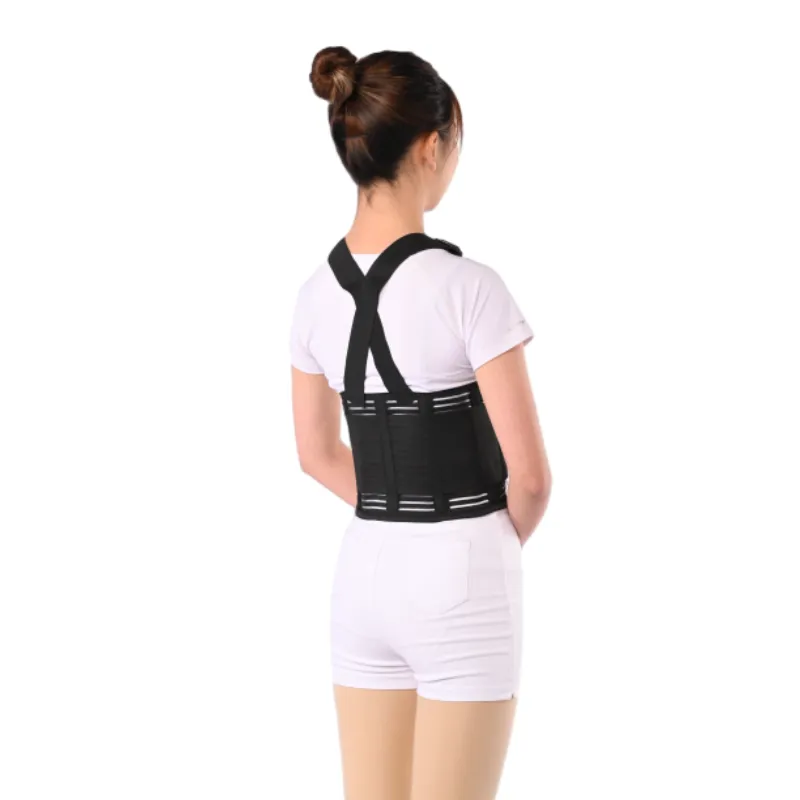
Authoritative Standards and Trustworthy Commitments
J&H Orthopedic's commitment to excellence is deeply embedded in its adherence to rigorous international standards and comprehensive customer support. The Rinforced Waist Support Belt, along with all our products, is manufactured under an ISO 13485 certified Quality Management System, specifically tailored for medical devices. This certification is a testament to our unwavering dedication to product quality, safety, and regulatory compliance. Furthermore, our products often carry the CE Mark, signifying conformity with European Union health, safety, and environmental protection standards, and where applicable, are registered with regulatory bodies such as the FDA.
Our service longevity of over 20 years in the orthopedic support industry speaks to our deep expertise and trusted partnerships with leading industrial and healthcare organizations worldwide. We regularly conduct internal and third-party testing to validate the tensile strength of materials, the resilience of elastic components, and the long-term durability of our hook-and-loop closures. Test data consistently demonstrate superior performance, exceeding industry benchmarks for wear and tear under simulated industrial conditions. This robust testing regime ensures that every heavy duty back support delivered provides reliable and long-lasting protection.
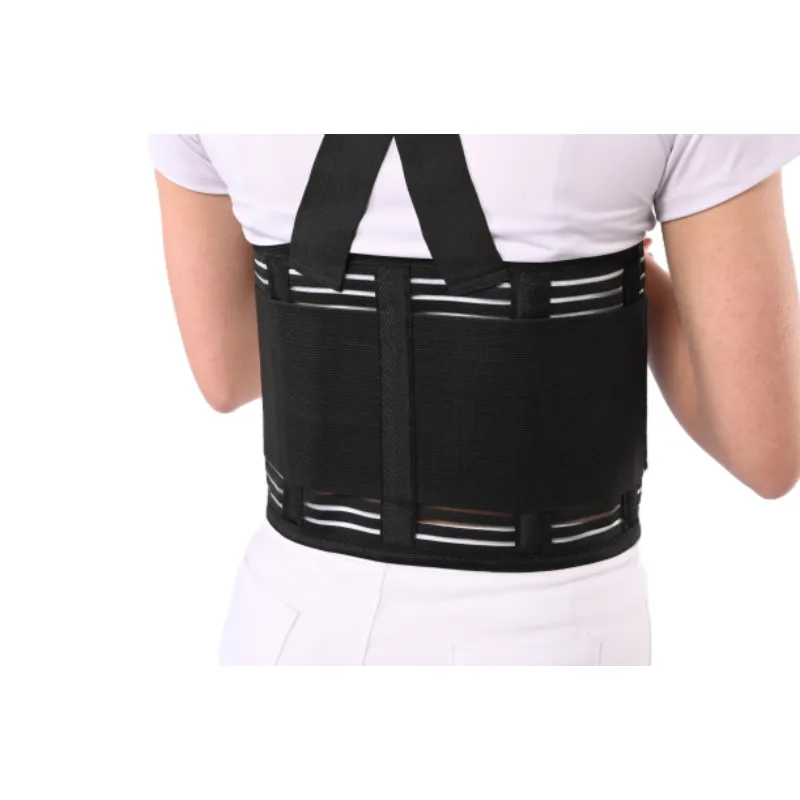
Frequently Asked Questions (FAQ)
Q1: How long can a heavy duty back support be worn safely during a workday?
A1: Most ergonomic guidelines suggest that back supports can be safely worn for extended periods, typically throughout an entire shift, provided they are properly fitted and do not restrict circulation or cause discomfort. Users should take short breaks if needed, especially if engaged in prolonged static postures. Our designs prioritize breathability and comfort for continuous wear.
Q2: What is the typical lifespan of the Rinforced Waist Support Belt?
A2: With proper care and under typical industrial usage conditions, the Rinforced Waist Support Belt is designed for a lifespan of 1 to 3 years. This can vary based on the intensity of use and adherence to washing and maintenance instructions. Its robust construction with quality materials ensures maximum durability.
Q3: Are these back supports washable?
A3: Yes, the Rinforced Waist Support Belt is designed for easy maintenance. Most models are machine washable on a gentle cycle with cold water. We recommend air drying to preserve the integrity of the elastic and other components. Detailed care instructions are provided with each product.
Q4: Can these belts be customized for specific corporate needs?
A4: Absolutely. We offer comprehensive customization options, including specific sizing, material modifications for unique environmental conditions, and the integration of company branding (e.g., logos). Our technical team collaborates closely with clients to develop solutions that perfectly align with their operational requirements and safety protocols.
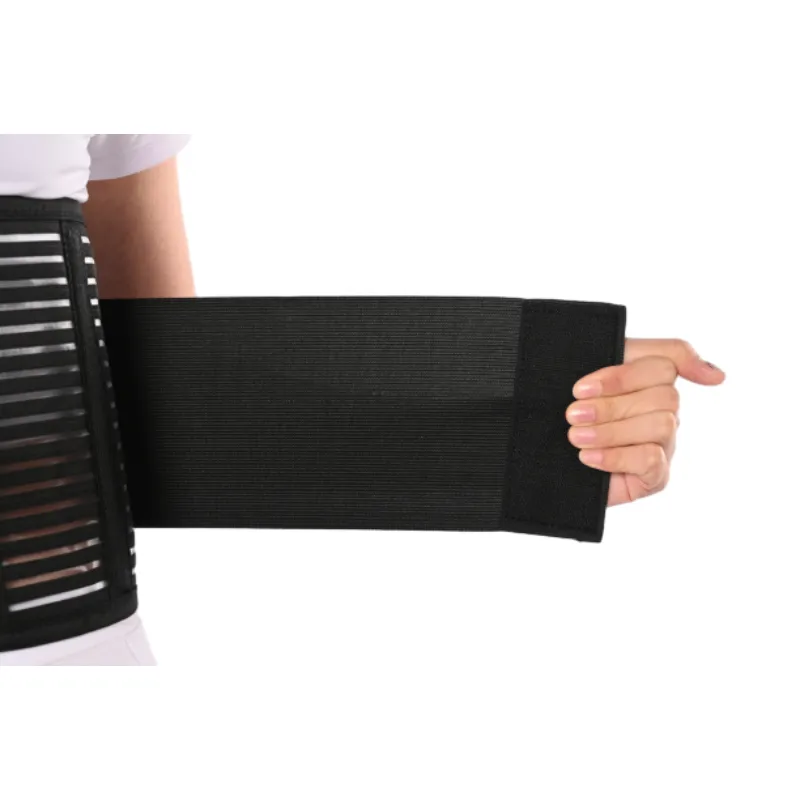
Seamless Delivery and Unwavering Customer Support
Understanding the critical nature of timely procurement in industrial settings, J&H Orthopedic maintains streamlined logistics and a robust supply chain to ensure efficient delivery of our heavy duty back support products. Standard delivery for bulk orders typically ranges from 4 to 6 weeks, depending on customization requirements and order volume. Expedited shipping options are available for urgent requirements, ensuring minimal disruption to client operations. Our global distribution network allows for reliable delivery to diverse geographical locations, mitigating logistical complexities for international clients.
Beyond product delivery, our commitment extends to unparalleled customer support. We offer a comprehensive 1-year limited warranty on all Rinforced Waist Support Belts, covering manufacturing defects and material failures under normal use conditions. Our dedicated customer service and technical support teams are available to assist with product selection, fitting guidance, maintenance advice, and any post-purchase inquiries. This holistic approach ensures that clients not only receive high-quality products but also benefit from expert assistance throughout their product lifecycle, reinforcing our position as a trusted partner in occupational health and safety.
Conclusion: Investing in Employee Well-being and Operational Resilience
The adoption of advanced heavy duty back support systems represents a strategic investment in both employee well-being and long-term operational resilience. By mitigating the pervasive risks of musculoskeletal injuries, businesses can foster a safer work environment, reduce associated costs, and cultivate a more engaged and productive workforce. The Rinforced Waist Support Belt epitomizes this commitment, blending superior material science, meticulous manufacturing, and ergonomic design to deliver unparalleled lumbar protection for the most demanding industrial applications. Partnering with a proven expert in orthopedic solutions ensures that your safety protocols are not just compliant, but genuinely effective, contributing significantly to a healthier and more efficient operational ecosystem.
References
- Occupational Safety and Health Administration (OSHA) Ergonomics Program Guidelines.
- National Institute for Occupational Safety and Health (NIOSH) Musculoskeletal Disorders Prevention.
- ISO 13485: Medical devices — Quality management systems — Requirements for regulatory purposes.
- American Society of Mechanical Engineers (ASME) standards for material strength and durability.
- Ergonomics in the Workplace: Preventing Musculoskeletal Disorders. Journal of Occupational and Environmental Medicine.
-
Hard Cervical Collar - Hebei Jianhang Technology | Comfort & StabilityNews Aug.13,2025
-
Hard Cervical Collar-Hebei Jianhang Technology|Advanced Neck Support&ComfortNews Aug.13,2025
-
Hard Cervical Collar - Hebei Jianhang Technology Co., Ltd.News Aug.13,2025
-
Hard Cervical Collar - Hebei Jianhang Technology Co., Ltd. | Advanced Neck Support, Adjustable FitNews Aug.13,2025
-
Hard Cervical Collar - Hebei Jianhang Technology Co., Ltd. | Neck Support, Adjustable FitNews Aug.13,2025





















